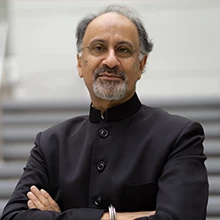 Unlocking Market Finance for Developing Countries
Unlocking Market Finance for Developing Countries
Market finance for developing countries has collapsed. MDBs are needed for mobilizing resources for development, through lending, guarantees, co-financing, and policy advice. There is a need for optimizing the use of shareholder capital through portfolio guarantees and other innovative structures, we argue in Market Finance for Development: Taking Stock, a new MIGA report.
Support market finance
Private capital flows to developing countries peaked a decade ago. These flows (excluding China) fell by 32 percent from a peak of $935 billion in 2012-14 to $636 billion in 2020-22. Foreign direct investment has declined, due to lower returns, rising labor costs, and policy uncertainty. Portfolio equity and debt flows have become negative. Private flows have become even more volatile during the last ten years. Amid this retrenchment, bank lending has increased, reflecting the difficulties of restructuring bonds seen during the global financial crisis. We have also seen a rise in lending to low- and middle-income countries, aided by past debt relief. There has been a substitution of market-based bond and equity financing by relationship-based syndicated lending.
Facilitate remittances and diaspora investments
In contrast to private flows, remittances to low- and middle-income countries reached $596 billion in 2022, surpassing FDI and ODA combined. Remittances provide a stable, and often counter-cyclical, source of external finance for developing countries. However, inadequate payments infrastructure, stringent regulations to combat money laundering, and overvalued exchange rates have contributed to high costs for sending money. In Africa, the most expensive place for money transfers, remittance costs are 8 percent on average, and often higher than 10 percent for remittances within the region – far above the UN SDG target of less than 3 percent by 2030. If we can lower the transfer cost for remittances, it would also facilitate retail cross-border payments associated with small trade, tourism, and investments. MDBs can also facilitate mobilization of migrants’ investments for development in origin countries.
Climate finance and carbon markets could be a source of financing
Annual climate finance flows to developing countries fell well short of the goal of $100 billion by 2020 enunciated at COP15 in 2009. The implementation costs of achieving the climate goals stated in the Paris Agreement are estimated at $7.6 trillion a year through 2050. Carbon markets will continue to grow, but the emission reductions achieved through voluntary credit purchases may be limited compared to compliance mechanisms. If we can improve information on carbon prices and increase transparency, it could facilitate growth of this market in developing countries.
Advancing local currency finance through MDB financing
Local currency bond markets are important source of financial stability, but foreign participation is limited, especially in poorer countries. Providing guarantees against currency risks could boost local currency lending. Increased participation by foreign lenders in local currency bonds could also reduce interest rates, and perhaps volatility as well.
South-South investment could spur innovation
The share of developing country investors in the total FDI stock in developing countries (excluding China) rose from 5 percent in 2002 to 17 percent in 2021. Investors tap diaspora networks, regional markets, and business conglomerates to mitigate risks. However, restrictions persist on outward FDI in many countries. Facilitating outward FDI enhances domestic innovation capacity, creates export opportunities, and improves access to technology, production processes, and management practices. In addition to engaging with conventional investors from the Global North, MDBs should engage with investors from the Global South to facilitate South-South investments.
Deploy innovative financing mechanisms
We need creative mechanisms to attract new types of investors and use future revenue streams as collateral. Diaspora bonds that leverage migrant savings on favorable terms have a huge potential to finance development priorities in developing countries.
International financing facilities like the International Financing Facility for Immunization (IFFIm), International Financing Facility for Education (IFFEd), and the IBRD’s new portfolio guarantee platform use innovative financing and guarantee structures to optimize donor grants and capital contributions.
- The IFFIm is a novel approach to lock in future donor pledges and make funds available immediately for addressing critical development challenges. It issues bonds or sukuks that are guaranteed by legally binding pledges from 11 donors.
- The newly established IFFEd will use grants from donors to provide guarantees for increasing MDB lending for education, enabling a large volume of loans for the resources pledged. It uses grants from donors to guarantee (portions of) the education loan portfolios of highly rated MDBs.
An International Guarantee Facility (IGF) can build on these structures to leverage donors’ capital contributions to guarantee MDB loans as well as private investments. If necessary, the IGF could front-load aid by issuing bonds backed by future pledges.
Confronting global challenges requires collective efforts of public, private, and multilateral partners. If we can creatively blend financing instruments, we can unlock resources even in a constrained environment.
Join us for a high-level panel discussion about the paper and its themes on Tuesday, Nov. 7, 2023, from noon-1:30 p.m. ET. Watch live here.




Join the Conversation